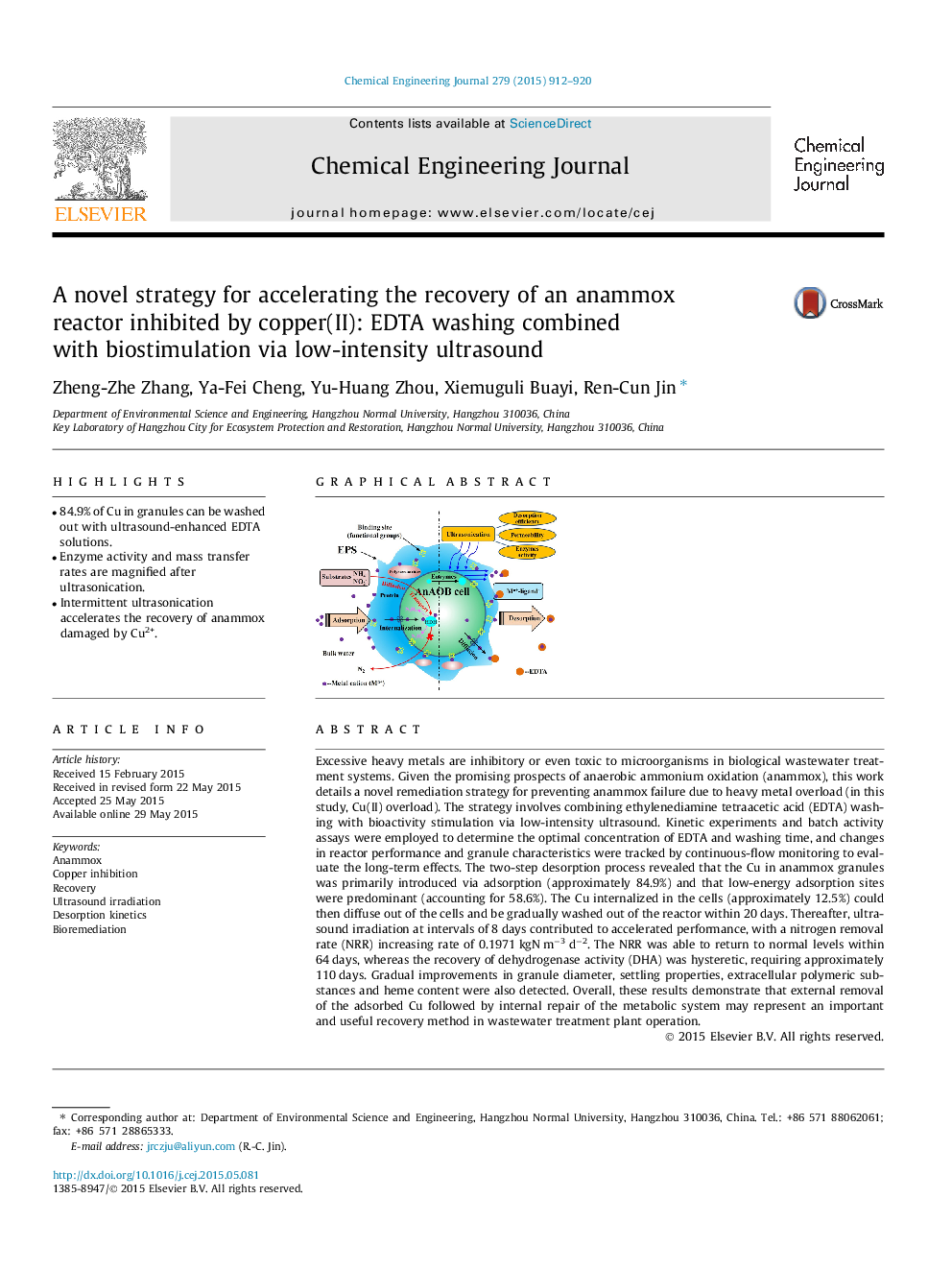| کد مقاله | کد نشریه | سال انتشار | مقاله انگلیسی | نسخه تمام متن |
|---|---|---|---|---|
| 146121 | 456362 | 2015 | 9 صفحه PDF | دانلود رایگان |

• 84.9% of Cu in granules can be washed out with ultrasound-enhanced EDTA solutions.
• Enzyme activity and mass transfer rates are magnified after ultrasonication.
• Intermittent ultrasonication accelerates the recovery of anammox damaged by Cu2+.
Excessive heavy metals are inhibitory or even toxic to microorganisms in biological wastewater treatment systems. Given the promising prospects of anaerobic ammonium oxidation (anammox), this work details a novel remediation strategy for preventing anammox failure due to heavy metal overload (in this study, Cu(II) overload). The strategy involves combining ethylenediamine tetraacetic acid (EDTA) washing with bioactivity stimulation via low-intensity ultrasound. Kinetic experiments and batch activity assays were employed to determine the optimal concentration of EDTA and washing time, and changes in reactor performance and granule characteristics were tracked by continuous-flow monitoring to evaluate the long-term effects. The two-step desorption process revealed that the Cu in anammox granules was primarily introduced via adsorption (approximately 84.9%) and that low-energy adsorption sites were predominant (accounting for 58.6%). The Cu internalized in the cells (approximately 12.5%) could then diffuse out of the cells and be gradually washed out of the reactor within 20 days. Thereafter, ultrasound irradiation at intervals of 8 days contributed to accelerated performance, with a nitrogen removal rate (NRR) increasing rate of 0.1971 kgN m−3 d−2. The NRR was able to return to normal levels within 64 days, whereas the recovery of dehydrogenase activity (DHA) was hysteretic, requiring approximately 110 days. Gradual improvements in granule diameter, settling properties, extracellular polymeric substances and heme content were also detected. Overall, these results demonstrate that external removal of the adsorbed Cu followed by internal repair of the metabolic system may represent an important and useful recovery method in wastewater treatment plant operation.
Figure optionsDownload as PowerPoint slide
Journal: Chemical Engineering Journal - Volume 279, 1 November 2015, Pages 912–920